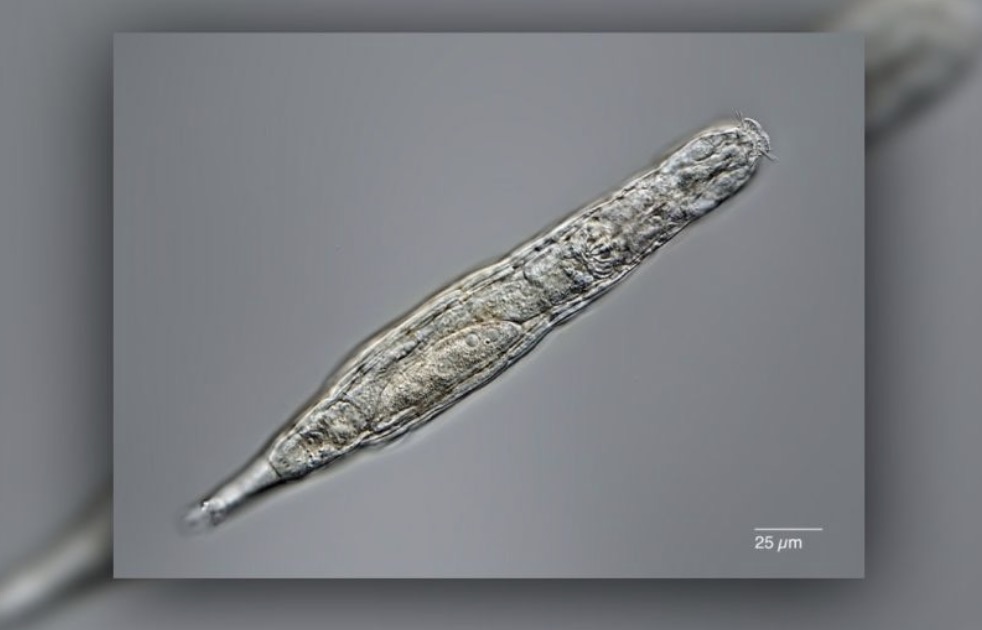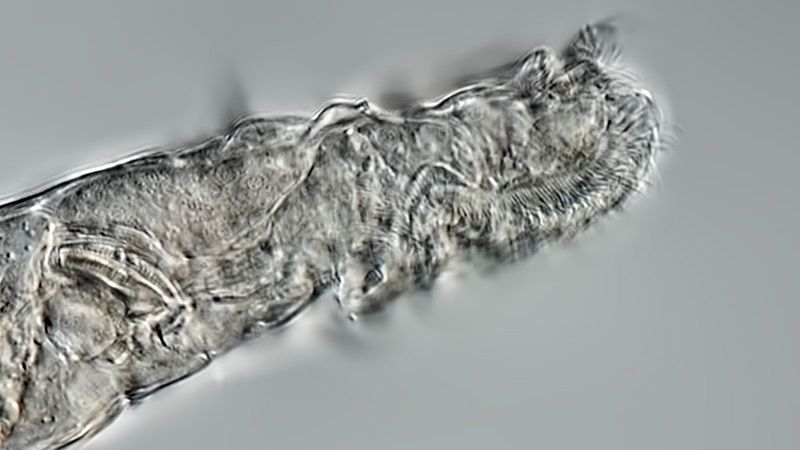Russian scientists revive 24,000-year-old 'zombie'
These undead creatures are just bdelloid rotifers, or microscopic "wheel animals" named for their round mouths surrounded by tiny hairs.

Like the famous tardigrade, bdelloid rotifers are creatures that can withstand amazingly harsh conditions like red-hot vents on the seafloor or the vacuum of space.
For this experiment, scientists went to Siberia and cut off a slice of permafrost, the term for permanently frozen ground. This particular area has been frozen at least since the late Pleistocene (2.6 million to 11,700 years ago).
The scientists took the rotifers frozen and gently defrosted them, at which point the rotifers began to live again, including their characteristic asexual reproduction. The secret to the success of rotifers is a state of metabolic pause called cryptobiosis.
Lead author Stas Malavin, a researcher at the Russian Institute of Physiological and Biological Problems, said: 'They suspend metabolism and accumulate certain compounds such as chaperone proteins, which help them recover from a state cryptobiosis as conditions improve.'

Cryptobiosis is important, because organisms with this ability go into a special sleep state that is needed to be revived afterward. It's like animals that are thoroughly prepared for hibernation compared to those that only take a short nap. Preparation is the key to waking up successfully.
To study rotifers, the scientists dug up to 3.5m deep to extract a sample of intact glacial soil, about 24,000 years old, according to carbon dating. After allowing the soil to thaw with a special environment that awakens the rotifers, scientists quickly lose track of the microscopic organisms as to which is old and which is new, because rotifers reproduce by how to create their own correct clones.

The study of cryptobiosis in organisms like rotifers expands the field of cryobiology — the study of organisms that live at very low temperatures, says Malavin. Hypothetically, this could lead to similar technology for humans. But that idea goes a long way, because humans are clearly more complex than small, relatively simple rotifers.
The rotifers join a group of revived, long-frozen organisms that include mosses, weeds, and small worms called nematodes. Scientists have brought each creature back to life after at least 1,000 years of freezing. In the future, hardier plants with cryptobiotic properties could change everything from growing to storing and possibly even making a journey with humans to Mars.
You should read it
- Samsung produces DRAM 16Gb GDDR6 exclusively for graphics
- The first aid procedure Heimlich had when he got a heterozygous object
- 30 creative templates make viewers unable to take their eyes off
- How to share files unlimitedly on Tresorit Send
- Instructions to download the black fire transformer application is causing fever on Facebook
- Dell denied rumors of 'XPS' death
- The lesson draws from interesting stories about Google penalties and dirty SEO
- Instructions to reset Windows Firewall Rules to the initial default state
- Top 7 foods that help reduce blood cholesterol best
- How to fix 'An app default was reset' error on Windows 10
- How to Entertain Yourself Without Objects
- How to turn on Facebook notifications in Chrome






 How does India bring the dead dead to life next month?
How does India bring the dead dead to life next month? Top 10 best Zombie games on phones
Top 10 best Zombie games on phones Top 10+ Zombie PC Games, the best zombie games on PC
Top 10+ Zombie PC Games, the best zombie games on PC Create Zombie photos during Halloween in Photoshop
Create Zombie photos during Halloween in Photoshop PUBG Mobile Zombie: Synthesis of new weapons and how to find them
PUBG Mobile Zombie: Synthesis of new weapons and how to find them PUBG Mobile Zombie: The location appears RPD police station Raccoon Police
PUBG Mobile Zombie: The location appears RPD police station Raccoon Police